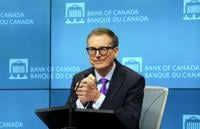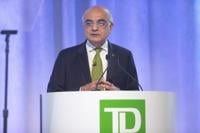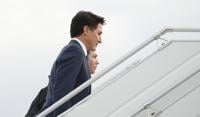OTTAWA - In a first for the Bank of Canada, it has released a summary of deliberations by its governing council regarding its policy decision to raise its key interest rate target by a quarter of a percentage point to 4.5 per cent in January.
The bank's governing council — made up of governor Tiff Macklem, senior deputy governor Carolyn Rogers and three deputy governors — met several times in the week before the rate decision was announced Jan. 25.
Here are five key takeaways from those discussions:
Rate hike or no change
The Bank of Canada's governing council discussed two options: whether to leave its policy rate unchanged or to increase it by a quarter of a percentage point. The case for raising the rate was based on the fact that developments in the economy since the previous decision on Dec. 7 had been quite strong, as well as risks that inflation could get stuck somewhere above two per cent.
Forward-looking language
The meetings included discussion about whether the central bank should maintain similar language as its previous policy statement, or signal a pause in rate hikes. The Bank of Canada decided on new language that signalled a pause while it assessed the affect of its rate hikes on the economy and inflation.
Housing market
The Bank of Canada says there was concern that the effects of tighter monetary policy could be larger than expected when it comes to the housing market. It said this could arise if the drop in home prices was to accelerate.
At the same time, the governing council recognized that continued strong immigration and household formation would provide underlying support for the housing market. Expectations of future monetary policy easing could also spur buyers to re-enter the market.
Sticky inflation
The governing council discussed that while several factors were combining to bring inflation down there was a risk of it becoming stuck materially above its two per cent target. It noted persistent supply chain challenges, services price inflation, wage growth and inflation expectations could all keep inflation above the target. It noted a rebound in oil prices could also push inflation back up again.
Global uncertainty
The governing council members expect the euro area will move into a mild recession, despite its surprising resilience. Risks related to the war in Ukraine continued to create uncertainty and higher interest rates were weighing on growth. The council also noted that oil prices could go higher because of China's reopening. It noted that if Chinese demand were to rebound by more than anticipated, oil prices could rise and put fresh pressure on inflation.
This report by ºÚÁϳԹÏÍø was first published Feb. 8, 2023.








































